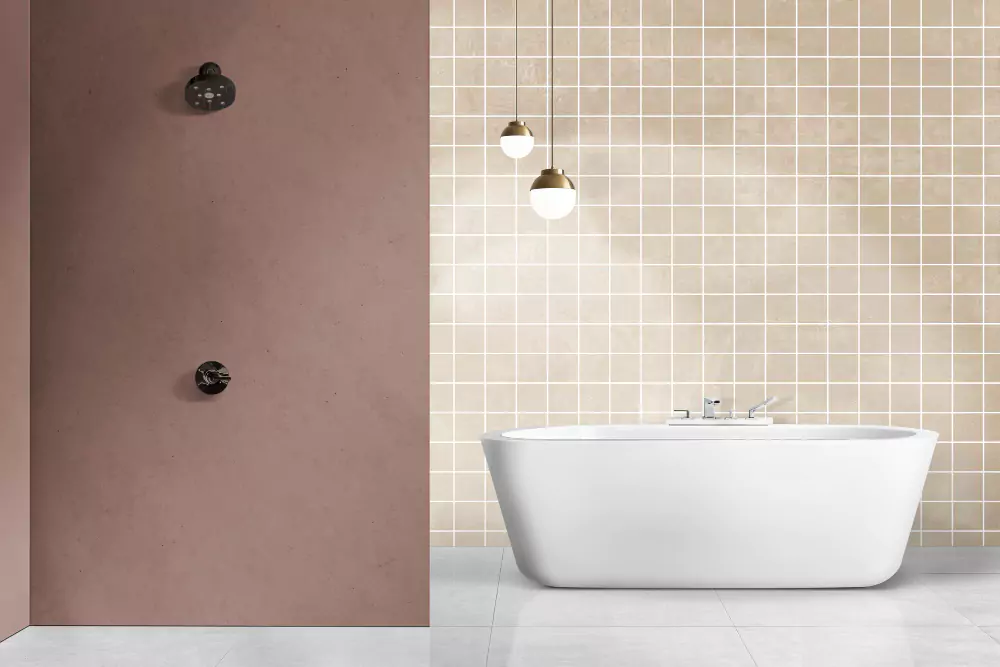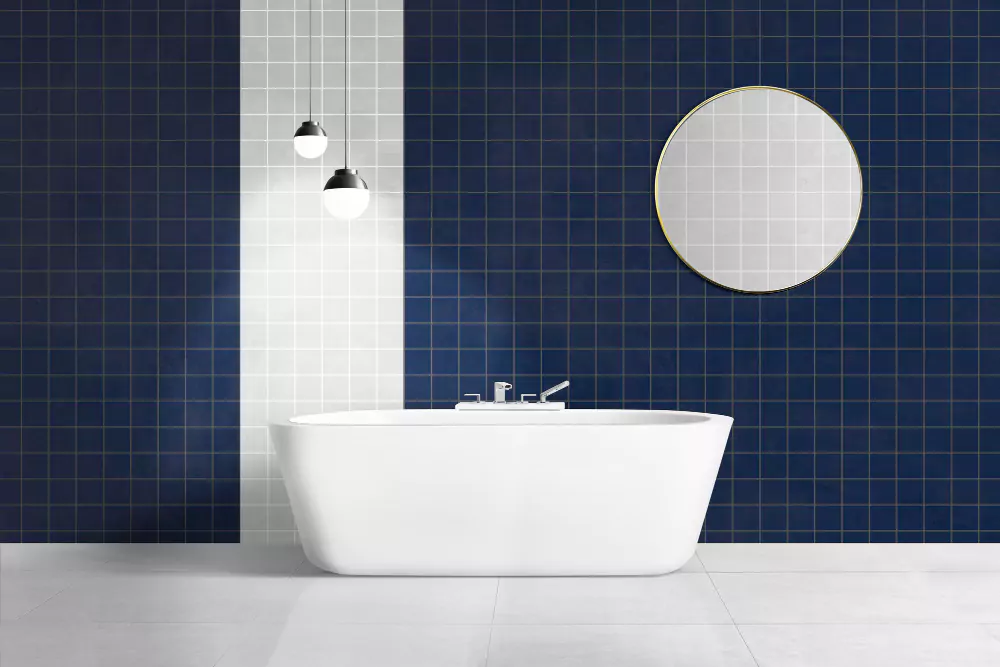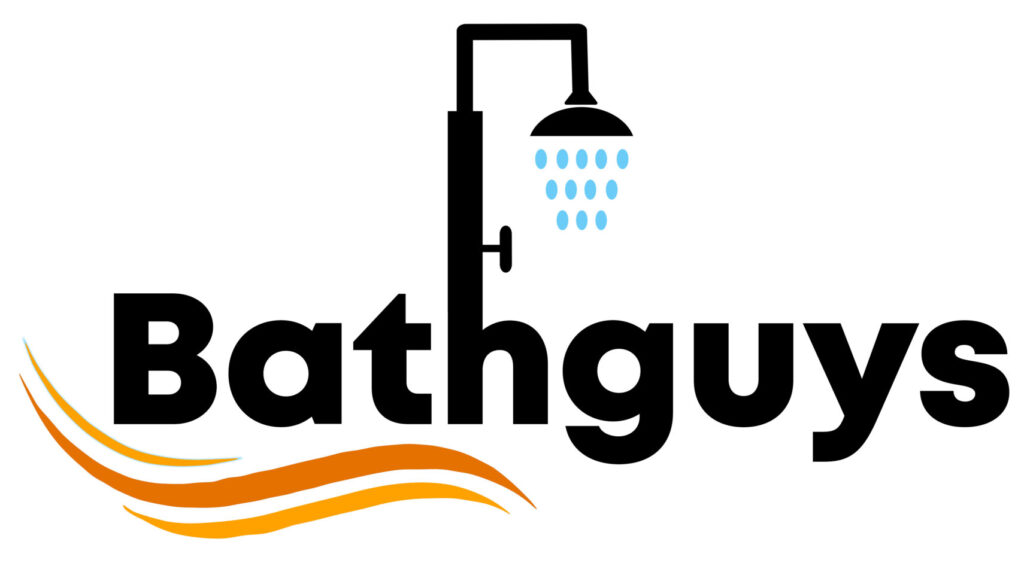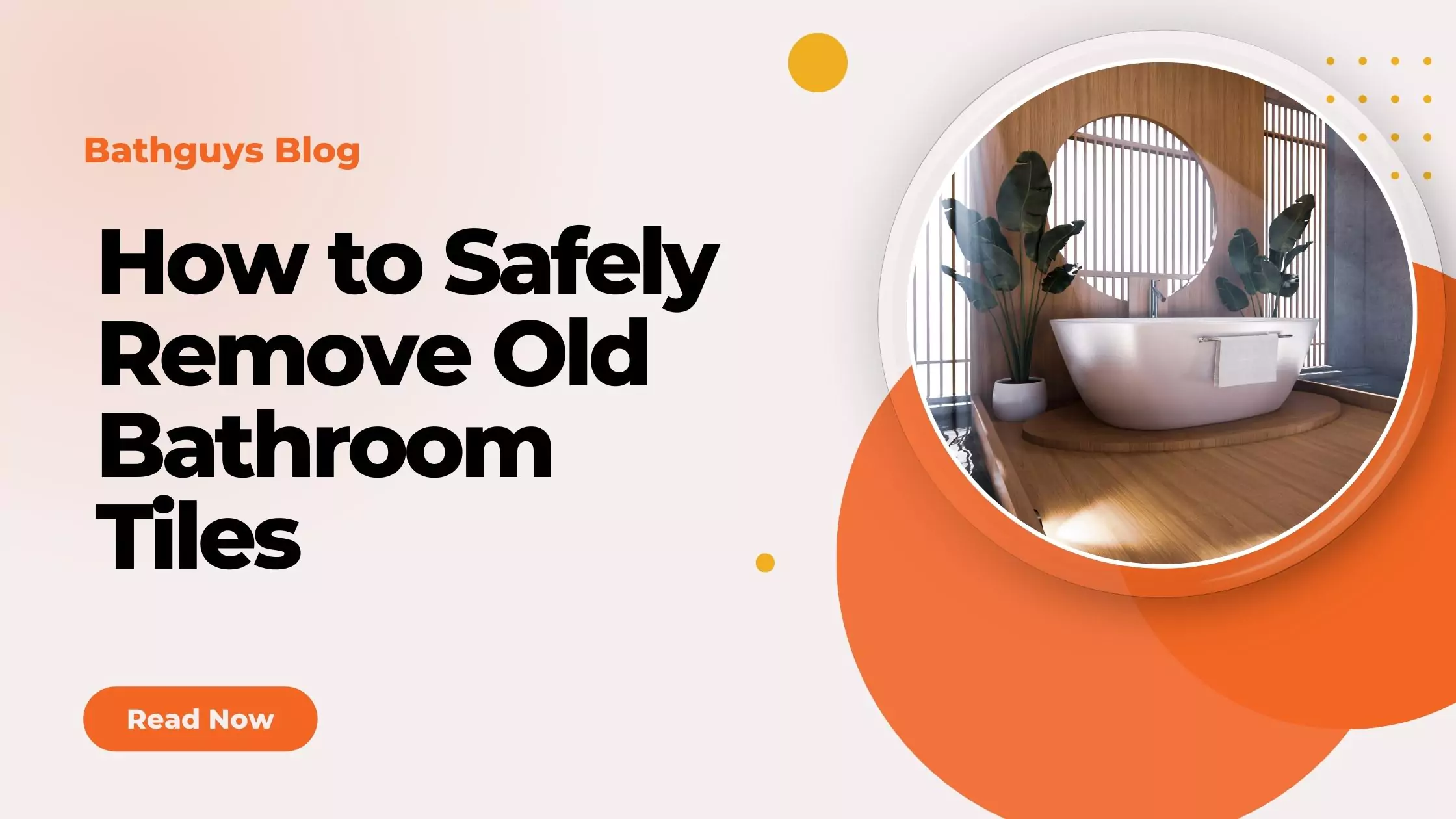Ready to give your bathroom a facelift? Removing old bathroom tiles is often the first step in a successful bathroom renovation. Whether your tiles are cracked, outdated or no longer fit your style, taking them out can be a game changer. But the process of safely removing old bathroom tiles can seem daunting if you’re not sure where to start.
In this post we’ll walk you through how to safely remove old bathroom tiles step by step. We’ll share tips, tools and safety precautions to make the job easy. Whether you’re doing a DIY or just need to know before you hire a pro, this post will give you all the info you need to feel confident to tackle the job.
Table of Contents
Why Remove Old Bathroom Tiles?
Old bathroom tiles can become a problem if they’re cracked, damaged or just plain outdated. Removing them is often the first step to giving your bathroom a fresh new look. Not only will new tiles look better but replacing old tiles also gets rid of hidden issues like water damage or mold growth.
Aesthetic Upgrades: Over time bathroom tiles can wear out or lose their appeal. Whether you want a trendy modern look or just a cleaner more vibrant look, removing old tiles opens up endless possibilities. Fresh tiles can instantly transform the space making it feel more inviting and up to date.
Prevent Structural Issues: Old tiles that are cracked or installed poorly can lead to bigger problems down the line. Water can seep into gaps and damage the walls and floor underneath. By removing the old tiles you can identify and fix any structural issues early on and prevent costly repairs in the future. In some cases old tiles can even contribute to mold or mildew growth which can affect your bathroom’s air quality and your health.
Removing old bathroom tiles not only looks better but also gives you a solid foundation for your renovation. Whether you’re retiling or upgrading to a different material this step is crucial for a successful and long lasting bathroom remodel.

Tools and Materials You’ll Need to Remove Old Bathroom Tiles Safely
Removing old bathroom tiles requires the right tools and preparation to do the job efficiently and safely. Using the wrong tools or skipping safety precautions can lead to accidents or damage to your bathroom surfaces. Here’s what you’ll need to remove old bathroom tiles safely:
1. Tile Removal Tools:
- Hammer and Chisel: These are the basic tools to loosen and lift tiles. A flat chisel is best for prying tiles off the wall or floor without damaging it.
- Pry Bar: A pry bar will get under tiles that are stuck to the surface. It’s great for removing larger sections of tiles.
- Utility Knife: A sharp utility knife is essential for cutting through grout and adhesive around the tiles. This step is crucial to avoid damaging the wall or floor underneath.
- Grout Saw: If you’re dealing with stubborn grout, a grout saw will help you remove it before you start the tile removal process.
2. Safety Gear:
- Gloves: Protect your hands from sharp edges and debris with heavy-duty gloves.
- Safety Goggles: Dust and flying debris are common when removing tiles so goggles will protect your eyes.
- Dust Mask: When tiles are removed, dust and small particles are released into the air. A dust mask will protect your lungs.
- Knee Pads: Since tile removal involves kneeling, knee pads will give you comfort and prevent strain on your knees.
3. Extras:
- Drop Cloths or Tarps: Spread them over the floor to protect it from debris and tile pieces as you work.
- Plastic Bags or Containers: Have these handy for easy disposal of old tiles, grout and debris.
With the right tools and safety gear you’ll do the tile removal job safely and smoothly. This is key to having a clean surface for your bathroom renovation whether you’re doing it yourself or hiring a pro.

Step-by-Step Guide: How to Remove Old Bathroom Tiles
Removing old bathroom tiles doesn’t have to be hard. Follow this simple, step by step guide and you’ll be able to safely remove tiles and get your bathroom looking fresh and new.
Step 1: Preparation and Safety First
Before you start, make sure your bathroom is ready for the job. Turn off the water supply so you don’t have any plumbing mishaps. Cover the floor with a drop cloth or tarp so you can catch any debris. Don’t forget to wear safety gear, gloves, goggles and a dust mask to protect yourself from sharp edges, dust and debris.
Step 2: Check the Tile Condition
Before you start removing, take a minute to check the condition of the tiles. Are they loose or damaged? If the tiles are already coming off the wall or floor you can start there. If the tiles are stuck, you’ll need to remove the grout around them to loosen them up. Use a grout saw or utility knife to cut the grout lines between the tiles.
Step 3: Remove Grout and Break the Tile Bond
Once the grout is removed it’s time to break the bond between the tile and the surface underneath. Start at a corner or edge and use a hammer and chisel to tap the chisel under the first tile. Be careful not to damage the wall or floor as you work your way around the tile. For stubborn tiles try applying a bit of heat with a heat gun to soften the adhesive before using the chisel.
Step 4: Remove the Tiles
Once the tiles are loose use a pry bar or chisel to lift them up. Start with the tiles closest to the edge of the bathroom and work your way in. For larger sections you can use the pry bar to pull up several tiles at once. If the tiles are still stuck use the chisel to lift them one by one.
Step 5: Clean the Surface
Once all the tiles are removed you’ll see adhesive or mortar left behind on the surface. Use the chisel to scrape away the remaining adhesive but be careful not to gouge the wall or floor. If the adhesive is stubborn use a chemical adhesive remover or a scraper to remove it all. Then clean the surface with a damp cloth to remove any dust and debris.
Can You Reuse Bathroom Tiles?
When removing old bathroom tiles, you may wonder if you can reuse them instead of starting fresh with new ones. The answer depends on the condition of the tiles and your renovation goals. Here’s what you need to know:
1. When Can You Reuse Tiles?
You can reuse bathroom tiles if they’re still in good condition and you want to save costs. Tiles that are intact, well-adhered, and undamaged can often be cleaned and reinstalled. If you want to keep the same style or save time on buying new tiles, reusing old tiles is a good option.
But you need to inspect each tile carefully to make sure it’s free of cracks or chips that could affect its performance or look. Reusing tiles is popular for DIY bathroom renovations where homeowners want to reuse quality materials but still update their space.
2. How to Reuse Old Bathroom Tiles?
If you’re reusing your old bathroom tiles, here are a few steps to follow:
- Clean the Tiles: Before reinstalling, clean each tile thoroughly to remove old adhesive, grout or dirt. Use a tile cleaner or a gentle scrub to make sure the tiles are spotless.
- Inspect for Damage: Check for any cracks, chips or wear that could compromise the tile’s structure. Damaged tiles should be replaced.
- Prepare the Surface: Make sure the wall or floor is in good condition before reinstalling the tiles. Any damage should be repaired to provide a solid base for the new adhesive.
3. When Should You Not Reuse Bathroom Tiles?
There are times when reusing old bathroom tiles is not recommended. If the tiles are severely cracked, stained or outdated, it’s better to replace them. Reinstalling damaged tiles can lead to uneven surfaces or not adhering properly especially if there’s existing mold or water damage behind the tiles.
Also if you’re looking for a modern bathroom design or a new look that matches other updated features, it’s best to invest in new tiles to match your renovation goals.

Also Read this: Top Bathroom Design Trends in Canada for 2025
How to Handle Unexpected Issues During Tile Removal
Tile removal can seem easy but unexpected issues can arise especially if the tiles have been in place for years. Be prepared for common problems and know how to fix them. Here are some issues you may encounter during tile removal and how to deal with them:
1. Stubborn Tiles or Adhesive
Sometimes old tiles can be super hard to remove especially if they’ve been stuck with strong adhesive or mortar. If you encounter stubborn tiles try these:
- Heat Gun: Heat can soften the adhesive and make tile removal easier. Direct the heat gun at the tiles to loosen the bond before using a pry bar or hammer and chisel.
- Chemical Adhesive Removers: If the adhesive is still tough to break, try using a chemical adhesive remover. These products dissolve old adhesive and makes it easier to scrape away. Just follow the manufacturer’s instructions for use.
2. Cracked or Damaged Walls and Floors
Sometimes removing tiles can reveal damaged walls or floors beneath them. If you see water damage, mold or cracks on the surface, you need to address them before proceeding with your renovation. Here’s how to fix them:
- Water Damage: If there’s water damage you need to repair the area before retiling. This may involve replacing damaged drywall or fixing leaks in the plumbing.
- Mold: If you find mold behind the tiles, you need to remove the mold using the right cleaner. If the mold has spread extensively you may need to replace the affected section of the wall or floor.
Cracks: If the floor or wall is cracked, repair the cracks using patching materials or new drywall before retiling to have a smooth surface for the new tiles.
3. Incomplete Tile Removal
If you’re having trouble getting all the old tiles off, you’ll end up with bits of broken tiles or adhesive stuck to the wall or floor. To remove these remnants:
- Scrape Away the Residue: Use a scraper or a utility knife to gently scrape away any leftover tile fragments, grout or adhesive. Be patient and don’t damage the surface below.
- Sanding: Once most of the residue is removed, you can use sandpaper to smooth out the surface, especially if you’re dealing with stubborn adhesive or grout remnants.
4. Unlevel or Uneven Subfloor
If the subfloor beneath the tiles is uneven or damaged, it will affect the installation of new tiles. To fix this:
- Use a Level: Check the surface with a level to see if it’s even. If you find any uneven spots, use self-leveling compound to fill in the gaps before installing new tiles.
- Repair the Subfloor: If the subfloor is damaged (water damage etc) it may need to be replaced entirely. Make sure the surface is solid and secure before you continue with your renovation.
5. Unexpected Plumbing or Electrical Issues
Sometimes tile removal will uncover hidden plumbing or electrical issues. If you find pipes or wires that are damaged or exposed, do the following:
- Turn Off the Water or Power: If you find plumbing or electrical issues, turn off the water or power supply immediately to prevent further damage or accidents.
- Call a Professional: If you’re not sure how to handle plumbing or electrical problems, it’s best to call in a professional to fix the issue before you continue with the tile removal.
By being prepared for these surprises you’ll be able to handle them efficiently and keep your bathroom renovation on track. Always approach these challenges with caution and make sure you fix the underlying problems before you continue with the tile installation.
Conclusion
Removing old bathroom tiles can seem like a challenging task, but with the right tools, preparation, and knowledge, it can be done safely and effectively. Whether you’re removing old tiles to update your bathroom’s look or address underlying issues like water damage, following the proper steps will ensure a smoother renovation process. By being mindful of common mistakes and unexpected problems, you can avoid costly errors and set your bathroom up for a successful remodel. Remember, if the job feels overwhelming, don’t hesitate to reach out to a professional for help. Safe tile removal is key to achieving a stunning, long-lasting bathroom transformation.
FAQs
-
How do I remove bathroom tiles without damaging the wall?
To remove bathroom tiles safely, start by using a hammer and chisel to gently loosen the tiles from the wall. Work slowly and carefully to avoid damaging the surface beneath. Make sure to cut the grout first with a utility knife to help reduce damage.
-
Can I remove bathroom tiles by myself, or should I hire a professional?
While you can remove bathroom tiles yourself with the right tools and safety precautions, it may be better to hire a professional if you’re unsure about handling the tools or encountering hidden issues like water damage or mold. Professionals can ensure the job is done efficiently and safely.
-
How do I dispose of old bathroom tiles?
Old bathroom tiles, grout, and adhesive should be disposed of in a sturdy bag or container. Be sure to check local disposal guidelines, as some areas may have specific rules for disposing of building materials like tiles. Consider recycling the tiles if they’re in good condition.
-
What’s the best way to clean tiles before reusing them?
To clean old tiles before reusing them, scrub them with a tile cleaner or mild detergent to remove any grout, adhesive, or dirt. For stubborn adhesive, use a scraper or adhesive remover. Make sure the tiles are completely dry before reinstalling them.
-
How long does it take to remove bathroom tiles?
The time it takes to remove bathroom tiles depends on the size of the area and how well the tiles are adhered. On average, it can take anywhere from a few hours to a full day to remove tiles from a small to medium-sized bathroom. Larger areas may take longer.





